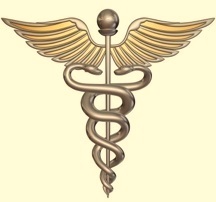A Guide for Physicians
and Other Healthcare Providers
Communication in Health Care

Good communication with patients, families, caregivers, consultants and referring physicians is absolutely vital to good patient care.
Many years ago, one of my attending physicians told me that you can tell how good a physician is by the size of his/her phone bill!
Listening to patients is critical
Excellence in listening and talking with patients should be very high on the list of goals that we want to accomplish in providing good patient care. Its importance is uncontested, yet we all occasionally forget how crucial it is. As a result, we frequently fall short of our patients' and colleagues' expectations. This ultimately has an undesirable effect on our reputations locally and globally as a group. After all those years of medical training, we should never let poor communication, which is easy to rectify, ruin our ability to take good care of our patients.
The following outline and its links may help provide some guidelines on improving this aspect of our bedside skills. Each topic will be discussed in further detail on other pages.
Methods of Communicating
--Personal Discussions with Patients – You can’t beat one-on-one, face-to-face patient encounters as the best way of communicating. Patients can see your concern and can better sense your wish to make them well. You can demonstrate and teach important facts about their medical problems and why certain tests or medications are necessary.
--Phone Calls with patients and families definitely have a place in patient care. Patients should be encouraged to call if they have questions or problems. However, telephone encounters should only be supplementary to regular patient visits.
--Email is getting to be a very important quick and easy method of imparting health care information to individual patients. With certain exceptions, you can let them know about normal test results or reminders about appointments. Concerns about security are rapidly decreasing as methods of encryption become more widespread. However, you should familiarize yourself with certain liability risks associated with online patient communication before starting this.
--Regular mail and Facsimiles are not yet totally out of vogue and still hold a significant place in reliably providing secure information to patients and colleagues. This has been most often used to send or receive referral letters, test results or consultants' notes about mutual patients.
Develop Good Communication Skills
To be an effective communicator with patients and families, there are several things to keep in mind to help you be more effective and to keep yourself out of trouble.
How To Discuss Certain types of Information
--Good News is easy, but be careful not to over promise. If you're too optimistic, it can come back to haunt you.
--Bad News is always difficult both on the receiving and the giving end.
--Errors are also difficult, sometimes life-changing depending on the circumstances.
--Saying No to Patient Requests - The art of saying no in patient care sometimes depends on how well the health care provider can explain to patients why some medications or treatments may be ineffective or even harmful.
Other Considerations
Discussions with Family Members – This is more complicated now than it used to be, causing some significant frustrations. You need to know how to overcome the problems and keep the loved ones in the loop.
Discussion with Other Members of the Medical Team – nurses, therapists and other health care workers who are dealing directly with the patient – This is critical in making sure your patient gets the care that s/he needs.
Exchanging Concerns with Other Consultants and Referring Physicians - We tend to be a little lax on this sometimes (maybe a lot of times?). God forbid if we actually have to call and discuss a patient with a colleague who is involved in his/her care!
Being more attentive to your communication skills will greatly improve the relationship you have not only with your patients but also with all the other physicians and allied health professionals in your community. This is all part of good patient care with a great side effect – fostering your reputation and good standing among your patients and colleagues alike.
References:
(adlink) by Bruce Hugman
This page was last updated on August 16, 2015.

Medical Documentation Solutions
Need help with medical transcription?
Send email to
MDS.Transcription@gmail.com
(Sponsored Link)
Back to "HomePage"
Art.com Collections (Sponsored Link)
Disclaimer | Privacy Policy | Copyright | Sitemap | Contact | Comments












 On this day of giving thanks, I am reminded of all of those who have supported this site over the years. I welcome your comments, your guest articles, and your readership. I am deeply grateful for all…
On this day of giving thanks, I am reminded of all of those who have supported this site over the years. I welcome your comments, your guest articles, and your readership. I am deeply grateful for all…


